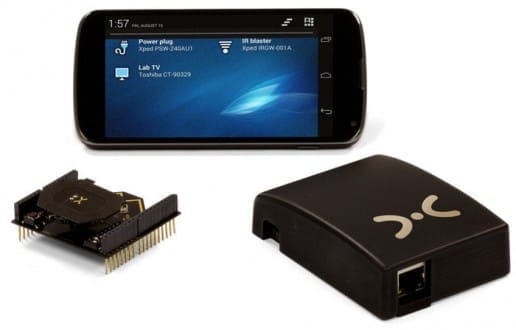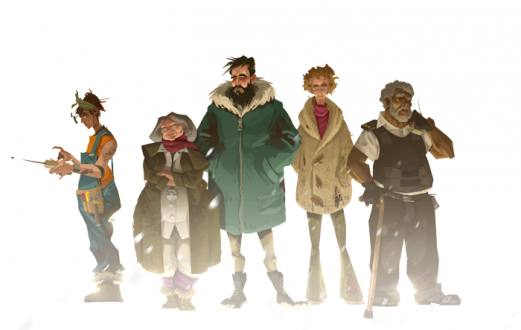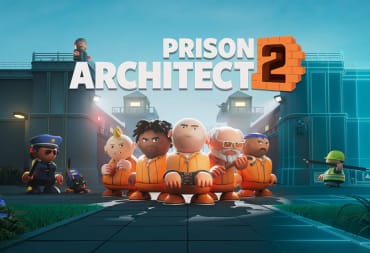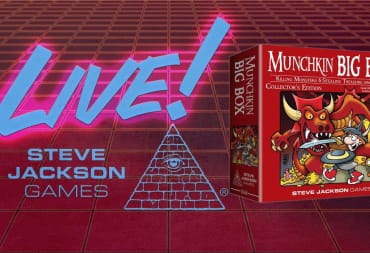This Week in Kickstarter we at TechRaptor decided to make up for last weeks game-centric iteration by focusing mostly on tech in this issue. We will still have some games but it’s mostly tech this week!
The first project we have for you this week is a rather intriguing piece simply called spot. 2,400 people go missing everyday and this app's aim is to help find them. It is currently in development by a company called DNA Visual Studios.
Spot is a mobile phone application that aims to help government agencies and communities in finding missing persons. Spot will be able to track where people have already searched, preventing time wasted backtracking. Spot does this by utilising the gps already in smartphones, allowing one to track where they've been as well as where others have been. As you would expect an application like spot requires help from social networking in order to collaborate. For this reason, spot has integrated notes into it to allow users to leave specific markers and messages to others taking up the search. People involved in a specific cause and view everyone else 's concerted efforts and vice versa. This makes the search more efficient and allows narrowing of the search quicker.
Currently as of the time of writing this, the spot kickstarter page has only accrued $56 USD of it's small $5000 USD goal. It has to raise the money by November 23 so I'm confident it will reach it's goal. It seems like a really great idea, but I can see a few issues with it. First of all it seems like it would be too easy to tamper with evidence wise should the wrong person like say the kidnapper get "involved" in the search. Hopefully there is a way to vet everything and keep everyone honest who takes part in a search. I'd like to hear more details on that aspect first but otherwise the app definitely comes from a good place and I wish them luck.
Next on the tech track is some homemade tech called DeB. Built by Australian developers Xped, it claims to be the world first device browser, making connecting devices simple and fun for everyone through the use of NFC (near-field communication). DeB aims to, with the help of the ADRC (Auto-Discovery Remote Control) shield and the Hub, open up a whole new platform for developers to create user experiences for various devices like the Arduino and the Raspberry Pi.
The DeB brings everything together into an intuitive easy to use system. Similar to how a web browser allows the viewing of websites, the Device Browser or DeB allows you to interact with any ADRC device. DeB is a smartphone app that provides developers the ability to create customised user interfaces without the skills, funds or time usually required to make an app. It comes with a set of device templates. This is to help the customer learn in exploring how to create their own customized UI.
DeB is ideal for educators in schools for teaching technology to their students as well as hobbyists, or novice engineers. Some examples of DeB's uses include the following. You can make toys, robots, augmented reality drones, control or monitor simple appliances like fans, coffee machines, heaters and more. You can store events and data from your projects in a central database called the Hub as well as practically anything you can think of.

DeB's system comes in three separate elements. You first have the DeB app for your smartphone (phone isn't included in the kit) discussed above. Secondly you have the ADRC (Auto-Discovery Remote Control Shield). This is a computer board that can be plugged on top of Arduino printed circuit boards to interface with them. It uses 802.15.4 communications technology with the ADRC Hub because that network gives longer range than Bluetooth, while using less power than Wi-fi.
The third and final component of the DeB system is the ADRC Hub itself. Known as just the Hub, this device contains the other half of the Auto-Discovery Remote Control. It acts as a translator between Wi-fi on the phone and the 802.15.4 network on the ADRC shield. The hub is also able to run advanced applications like rules engines or energy monitoring software soon to be available in the near future. Finally it will also provide a secure interface to the internet in order to allow you control of connected devices while away from home.
As of writing this the DeB project has raised $9881.14 USD of it's required pledge of $16,3699.13 USD. With 24 days to go before November 20, it looks extremely likely that the DeB Kickstarter campaign will succeed with flying colours. It's pretty clear that this is a rather ambitious project to create the ultimate device connection interface. It could open up a lot of doors and provide us with possibilities seen only in old 80's science fiction films as a child. Better yet it allows complete plebeians to coding and programming to harness a small percentage of the potential of this technology. I look forward to seeing what the customers create with this one.
Dexmo is another piece in the evolving world of Virtual Reality and robotics – an exoskeleton hand that captures your movement and can even provide feedback.
Dexmo captures 11 degrees of motion in your hand with its exoskeleton and is able to transmit it wirelessly via Bluetooth to the device that you are working with – whether that is a computer or a piece of robotics. There are two devices – the Dexmo Classic is ‘merely’ an affordable hand exoskeleton motion capture device. The Dexmo F2 not only contains the motion capture but their patent-pending joint brake technology that stops the finger from moving further inwards when it detects collisions either in the program or by a motion sensor on the device.
What helps set the Dexmo apart is not only its physical exoskeleton presence but also its affordability. At a price point of $65 for a single Dexmo Classic, it is something that the average consumer or developer can afford. All of them also come with development kits for those who are wanting to work it into either Virtual Reality or Robotics projects.
The joint gear-disk braking mechanism in the Dexmo F2 presents some rare opportunities. The technology is pending a patent and pretty small on the index finger there allowing it to give the detection for collision without unduly weighting down or interfering with the device. Its also relatively sturdy and able to take some day to day abuse that comes with something like that unlike some motion capture technology. With 26 days to go it is early, but well on pace to make its goal.
Another tech item on Kickstarter is Ampy, a new battery that gains its charge by your movement.
Taking the kinetic power you generate while moving around, Ampy is a green power battery for the modern age. Everything you do, Ampy stores up so that you can use it later to charge USB devices such as your phone. While some wireless batteries can get weighted down to carry things or are bulky, Ampy is sized at 2.5” x 2.5” x 0.75” and weighs 140 grams.
Everyday people walk around and that generates a lot of energy. The team at Ampy guesses about 10 000 steps is how much people walk, and from that Ampy can provide 3 hours of battery time for your phone. Want to exercise or get an extra charge? Well an hour of cycling or 30 minutes of running can provide the same amount of energy. The accessory kit that they have designed for it is also meant to help allow easy movement for all types of sports and workouts. Their patent pending inductors allow it to be so small and its battery size is designed for everyday usage. While it can’t provide huge charges for very power hungry devices its use for most people will be with devices like phones, and watches. Ampy is a green style technology people can generally support and use in a day to day matter - it doesn’t force the changes on but instead encourages a greener, and more active lifestyle by its very nature.
Their patent pending inductors allow it to be so small and its battery size is designed for everyday usage. While it can’t provide huge charges for very power hungry devices its use for most people will be with devices like phones, and watches. Ampy is a green style technology people can generally support and use in a day to day matter - it doesn’t force the changes on but instead encourages a greener, and more active lifestyle by its very nature.
They have already made their goal so it is certain to be a success in that way. They have said they are working out stretch goals so that may come in the next few days.
Next project is yet another post-apocalyptic survival rpg (groan). Impact Winter however, happily stands above the rest. Set upon the remnants of an Earth buried in several tonnes of snow, this one promises to be substantially different. Developed on the Unity engine by UK-based studio Mojo Bones, it looks set to take the indie scene by storm. Snowstorm that is.
Impact Winter is set eight years after an event known as the "catastrophe", when an asteroid collision that decimated the Earth's population formed an ice age that lowered the planet's temperature, burying it under constant snowfall. It became known as the Impact Winter. Your android companion intercepts a mysterious broadcast claiming to provide help if Jacob Solomon and the survivor group holed up in the church can survive for 30 days.
You play as Jacob Solomon. You will need to survive the Void; a harsh winter climate that covers a derelict open world of dynamic weather, haunting interiors and fearsome wildlife. You will need to guide your team in order to ensure survival, using their skills to maintain and build your base. The game is filled with non-linear story events from problem solving, to random encounters where your decisions will always affect the outcome.
Ako-Light your robotic companion contains tools that will help you explore and unlock areas of the world. From carrying supplies, digging, keeping your path or scanning for hostile ambushers, he is your lifeline. Adding another layer of risk vs reward to the game is all the different function Ako-light has at it's disposal. It can provide a valuable companion, but only if it remains powered. Yes, your robotic friend has a limited energy supply, meaning every action drains it's battery. Should Ako's battery drain too much then it enters power-save mode and will require Jacob to take it back to the church to recharge. This will cause Jacob's fatigue to increase faster from having to carry Ako-Light's chassis.
The group Jacob leads in Impact Winter is made up of various different characters, each with their own skills of crafting, well-being, survival as well as technician. Each member is an irreplaceable asset which can be utilised if the required stats and supply requirements are met. it is worth noting that there are no do-overs in this game. If you lose one of your group you will have no more access to their unique skill, so survival is crucial. The 4 other survivor non playable characters will have their own automation throughout. You will need to micromanage their wants and needs and stats in order to ensure the best chance at surviving. As well as keeping the group safe and content you will need to keep Jacob safe too. He, like the rest of the group can fall prey to frostbite, illness, surprise attacks and depression.

Currently as I write, the Kickstarter page for Impact Winter has only managed to collect $10,878 of their $95,000 goal. There's 15 days of their initial 34. With only just under half the days gone and such a small amount accrued, it looks as though this campaign may fail before the 12th of November.
I'm honestly a little bummed. the intro music to the Kickstarter video gave me the vibe of John Carpenter's the Thing, while the setting and having to micromanage your group greatly reminds me of the sequel/videogame released in 2002. This Kickstarter is really struggling and while I hope they will make it in time I'm pessimistic this will happen. Impact Winter looked set to be a breath of fresh air in an otherwise mediocre sea of post-apocalyptic video games. I hope anyone reading this will help Mojo Bones make their unique IP a reality but it looks like only time will tell.
Continuing post-apocalyptic theme we have another one known as Graywalkers: Purgatory. A turnbased strategy RPG by Dreamlords Digital, it promises emergent game play in a world where Earth, Heaven and Hell have met.
This is the Graywalkers team second attempt at Kickstarter – having attempted last year at 100k they spent the last year working on their game as well as their kickstarter pitch. This time they have come out with a demo and done a better job of communicating – as well as having a more achievable goal.
Graywalkers: Purgatory promises a fully indepth RPG with factional responsiveness with numerous factions with their own agendas. The strategic layer of the game is built on ideas from XCom and Jagged Alliance from setting your teams on missions, explore areas, update your personnel, equipment, research and making decisions regarding factions.
The tactical layer of the game in combat appears to be pretty in-depth with a lot of weapons depth, height options and different abilities. With a lot of paths (classes), races, skills, attributes and perks/flaws the characters should have a lot of diversity making the combat depth even greater. With a maximum of 36 members and over 40 recruitable characters finding the right balance is big.
The game has the expected story mode and they have been working a lot on that but where the game may get more longevity is that it will come with a freeform procedurally generated mode. In that version you can not just mess around but your success is measured by your influence, power and resources allowing for different enemies and results to emerge.
If it makes its goal Graywalkers: Purgatory aims to come out in about 18 months or about January 2016. It already has a combat demo available and they do promise an early access version when they have solid alpha version. It is planned right now for just the PC/Mac/Linux but likely stretch goals would include other platforms as well as expanding some of the scope in parts.
Right now it appears likely Graywalkers: Purgatory will fall slightly short of where its goal is. If you think the idea is worthwhile, or were interested in it last year I strongly suggest you check it out, try its demo, and consider backing it.
That it’s for this week guys. we will try to keep the ratios equal in tech to games from now on. Thanks for baring with TechRaptor while we are getting ourselves together in this experimental segment.
We will be back next week with another edition of our top picks from Kickstarter.
Have a tip, or want to point out something we missed? Leave a Comment or e-mail us at tips@techraptor.net






